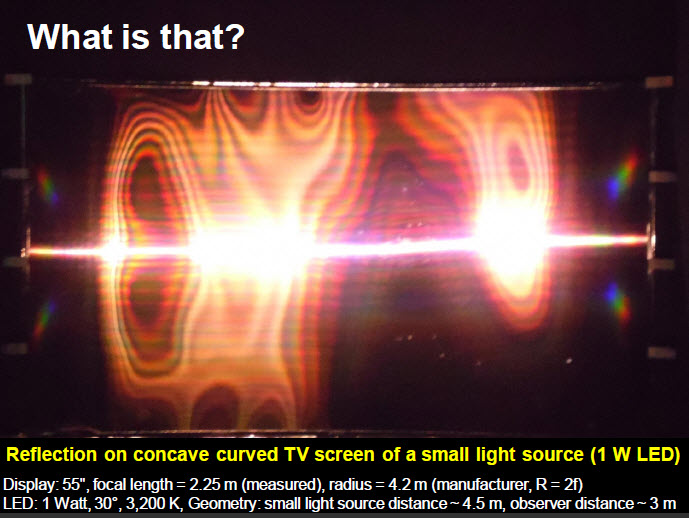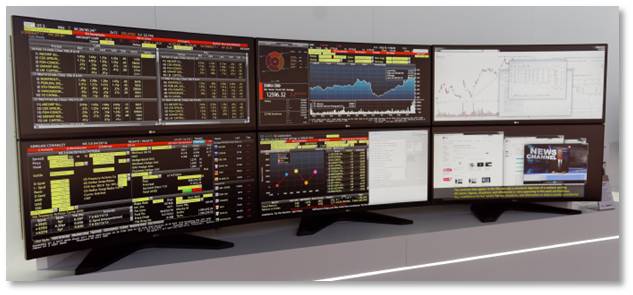Curved TVs – I remain one of those that is not yet convinced about the need and desirability of curved TVs*. My long-standing friend and image quality maven, Ray Soneira, says that I’m wrong when I say that curved TVs are a gimmick. He says that curved TVs have significant advantages in the suppression of reflections, something that I usually care a lot about. However, I find that I don’t like the distortion of viewing the screens from “off axis” (while accepting that Ray’s maths is correct).
At the IFA trade show, I heard a rumour that the curved TVs also exhibited another effect. When a bright point of light is shown at a particular distance from the display, you get the effect that the light is shown as a bright line across the display. I went down to the Loewe/TCL booth and did some tests. I found that I could use the LED light on my mobile phone to trigger this effect.
Unfortunately, I couldn’t get a good photographic image of the effect, so I was very pleased when I saw that
Prof. Dr. Karlheinz Blankenbach, of the
display testing lab at the University of P
forzheim had shown an image of the effect that he had created when testing the performance of curved TVs. He presented the results at the recent meeting of the SID Central European chapter and kindly shared them with us.
 The image from a 1W led reflected in a curved TV.
The image from a 1W led reflected in a curved TV.
Prof Blankenbach’s results showed that set makers’ claims (backed up by Soneira’s tests) that curved sets improve the viewing angle performance over flat sets were correct. However, he also found that small (1W) leds, with less brightness than typical LED lamps can causing annoying and distracting artefacts because of the effects of the curve. There are also magnification effects and to avoid these, the viewer really needs to sit at the focal point of the display which is half the radius. As the radius of the curved screens is around 4.2m (mfr) to 4.5m (measured), that means sitting at 2m or so, which is much closer than typical viewing distances. It also means that panel makers need to be careful with the precise radius used.
I’m not sure that, having spent extra to get a curved set, the idea of having to move the seating to avoid these effects is likely to be very popular. On the other hand, it means that viewers have to sit much nearer the optimum distance to view the UltraHD resolution of their new set.
Prof Blankenbach is the driving force behind the annual
Electronic Display conference in Nuremberg which takes place on 25th and 26th February 2015. Thanks to him for permission to show these results. –
Bob Raikes
* On the other hand, I believe that curved monitors can be a real advantage for professional applications, as monitors are typically viewed by a single person who can be at the “sweet spot” and really take advantage of the curve. I have shown below a picture taken in the private area of a monitor maker’s booth at the recent IFA trade show.
 This monitor array was shown in a private area at IFA.
This monitor array was shown in a private area at IFA.
 The image from a 1W led reflected in a curved TV.
The image from a 1W led reflected in a curved TV. This monitor array was shown in a private area at IFA.
This monitor array was shown in a private area at IFA.
